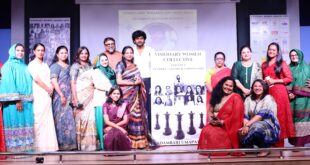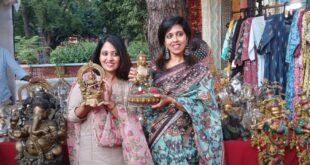Chennai 9th May 2022: India is known as the Thalassemia capital of the world as the country has largest number of children with Thalassemia major. Every year over 10,000 children are born in India with Thalassemia, a congenital blood disorder that causes the body to make less hemoglobin which facilitates red blood cells to carry oxygen. According to World Health Organization, over four million Indians are thalassemia carriers and more than 1,00,000 are patients. Parents, who are usually asymptomatic, are the carriers of this disease and have a 25% chance of passing this disease to their children. In India, due to financial barriers and lack of access to treatment, many children do not survive.
Patients suffering from Thalassemia are required to undergo lifelong regular blood transfusions to maintain their hemoglobin levels. However, it can be cured with a stem cell transplantation. But only a very small percentage of cases have access to transplantation due to lack of awareness, affordability, and inadequate centers where this treatment is available.
Dr. Sunil Bhat, Director and Clinical Lead, Pediatric Hematology, Oncology and Blood & Marrow Transplantation, Narayana Health, Bengaluru said, “Thalassemia patients are mostly children who go through painful blood transfusion for several years in their life. Blood transfusions have its challenges and risks for the patients. A stem cell transplantation is currently the only curative option available for this condition. Recent data shows more than 90% success rate of stem cell transplantation in patients who have HLA (Human Leukocyte Antigen) matched stem cell donors. A successful blood stem cell transplant depends on a perfect HLA tissue match. Patients and donors of Indian origin have unique HLA characteristics that are severely under-represented in the global database, which makes the probability of finding a suitable donor even more difficult. Indian patients mainly require an Indian tissue match. This calls for increased awareness and need to encourage many more people in India to register as a potential blood stem cell donor.”
There are around 270 million Thalassemia patients in the world but awareness about the disease is alarmingly less. Symptoms of Thalassemia major usually start at 4 to 6 months of age and usually present with lethargy, poor feeding, progressive pallor, poor weight gain and sometimes vomiting and diarrhea. On examination you see the babies are pale and have liver and spleen enlargement.
In a blood stem cell transplant, stem cells are collected from blood of the donors and transplanted into the thalassemia patient after their bone marrow has been destroyed. Only 30% patients who need transplants have a fully HLA matched donor in their family, rest of them depend on an unrelated donor.
Patrick Paul, CEO, DKMS BMST Foundation India, says, “It is our mission to support blood cancer, and other blood disorders such as Thalassemia patients in India, for which we have initiated DKMS-BMST Thalassemia programme. Under this programme, DKMS-BMST collaborates with local NGOs and transplantation clinics to organize camps where pediatric thalassemia patients and their siblings travelling from afar places in India to give buccal swab samples for free HLA typing. Samples from the camps are analyzed in the DKMS laboratory based out of Germany and clinical matching reports of the same are provided. In cases where there is no matching sibling for a sick child, we also support unrelated donor searches for patients.” Since the inception of the programme, so far 7162 HLA typings have been facilitated by DKMS-BMST.
Baby Bhushra Naqeeb 11-year-old girl is a thalassemia survivor
Baby Bhushra suffered from paleness and low hemoglobin when she was just 6-months-old. After several tests and evaluation, she was diagnosed as Thalassemia positive. She had to undergo painful blood transfusion for over 10 years until the doctor suggested an allogenic stem cell transplant as her only chance at survival. Hence the patient family decided to go for a stem cell transplant. In February 2021, with the support from DKMS-BMST thalassemia programme, the sample collection was done for the family and she got a perfect match with her sister Soha. She underwent stem cell transplantation in October 2021 under Dr. Sachin Jadhav, HCG group of hospitals. Post the transplant, Bhushra is able to lead a normal life as she also attends regular school.
Mrs. Shobha Tuli, founder of the NGO – Thalassemics India, President-Federation of Indian Thalassemia Associations, says “At present Stem cell Transplant is the only curative treatment available for Thalassemia patients. If not cured on time, such patients are dependent on blood transfusions all throughout their lives along with other expensive treatments & regular investigations. Thalassemia Bal Sewa Yojna is a unique project initiated by the Ministry of Health & Family Welfare Govt. of India. Under this scheme, a patient can get financial aid up to Rs. 10 lakhs from Coal India Ltd. DKMS has offered us an opportunity to get free HLA tests done in the country. This enables the patients to check if they have a matched sibling. Thalassemics India is so grateful to DKMS for such an opportunity been given to patients who otherwise couldn’t have afforded the costs of the HLA matching.”
Register as a potential blood stem cell donor:
Healthy individuals between 18-50 years of age can register at: dkms-bmst.org/register
All it takes is five minutes of your time and a simple 3 step process:
Step 1: Visit the site, fill up an online form and you will receive a DIY swab kit at home.
Step 2: Once you receive the swab kit, fill out the consent form and take a tissue sample from the inside of your cheeks with 3 cotton swabs provided in the kit.
Step 3: Send back your swab sample in the pre-paid envelope provided.
DKMS laboratory will then analyze your tissue type and your details will be available in the global search for blood stem cell donors. If you do come up as a suitable donor, DKMS-BMST will get in touch with you straight away. Once you come up as a match, blood stem cells will be obtained from the bloodstream using a procedure called Peripheral Blood Stem Cell Collection, which is similar to a blood donation wherein only your stem cells are taken. This is a safe, non-surgical outpatient procedure.
 Expressnews
Expressnews








